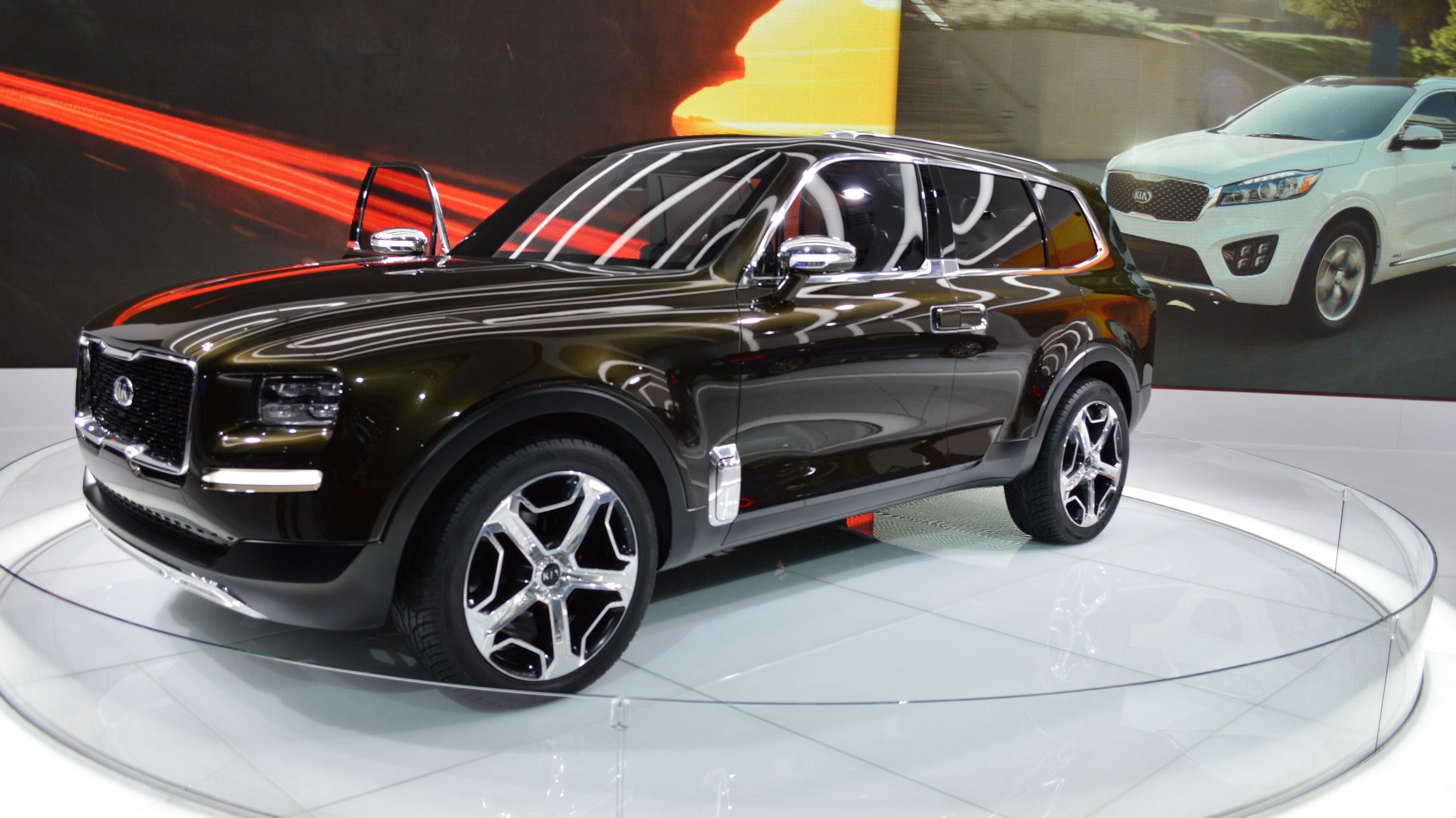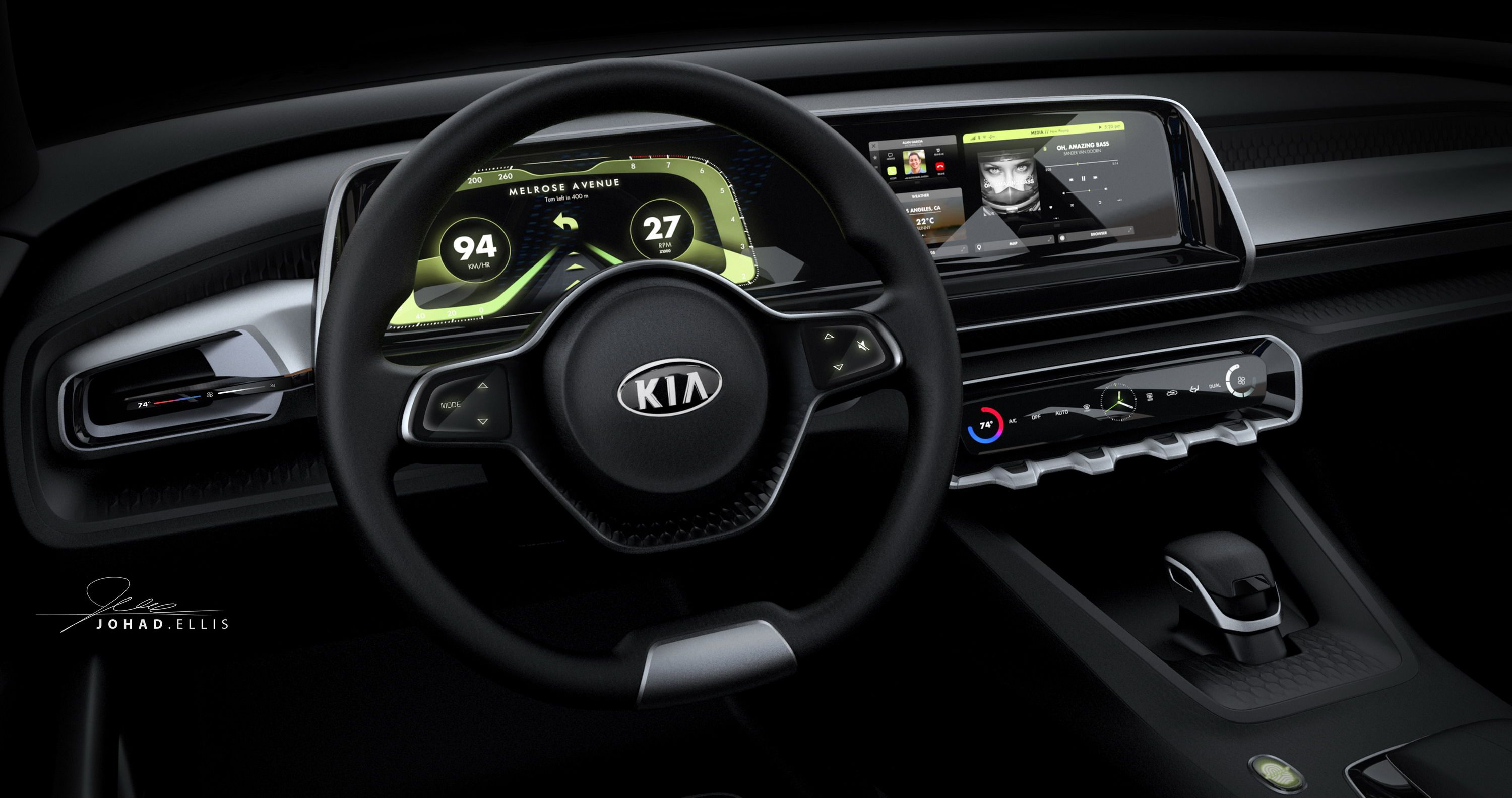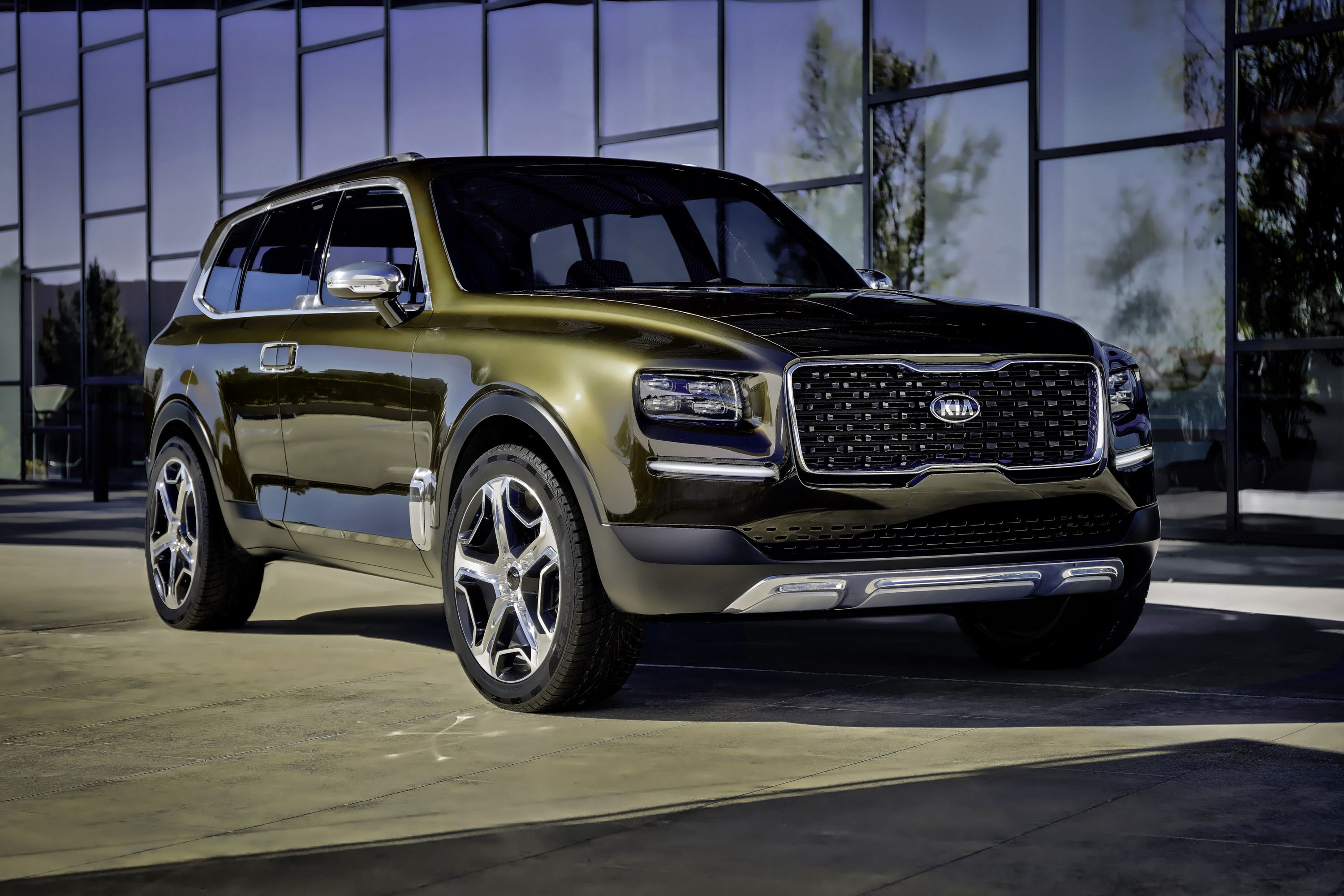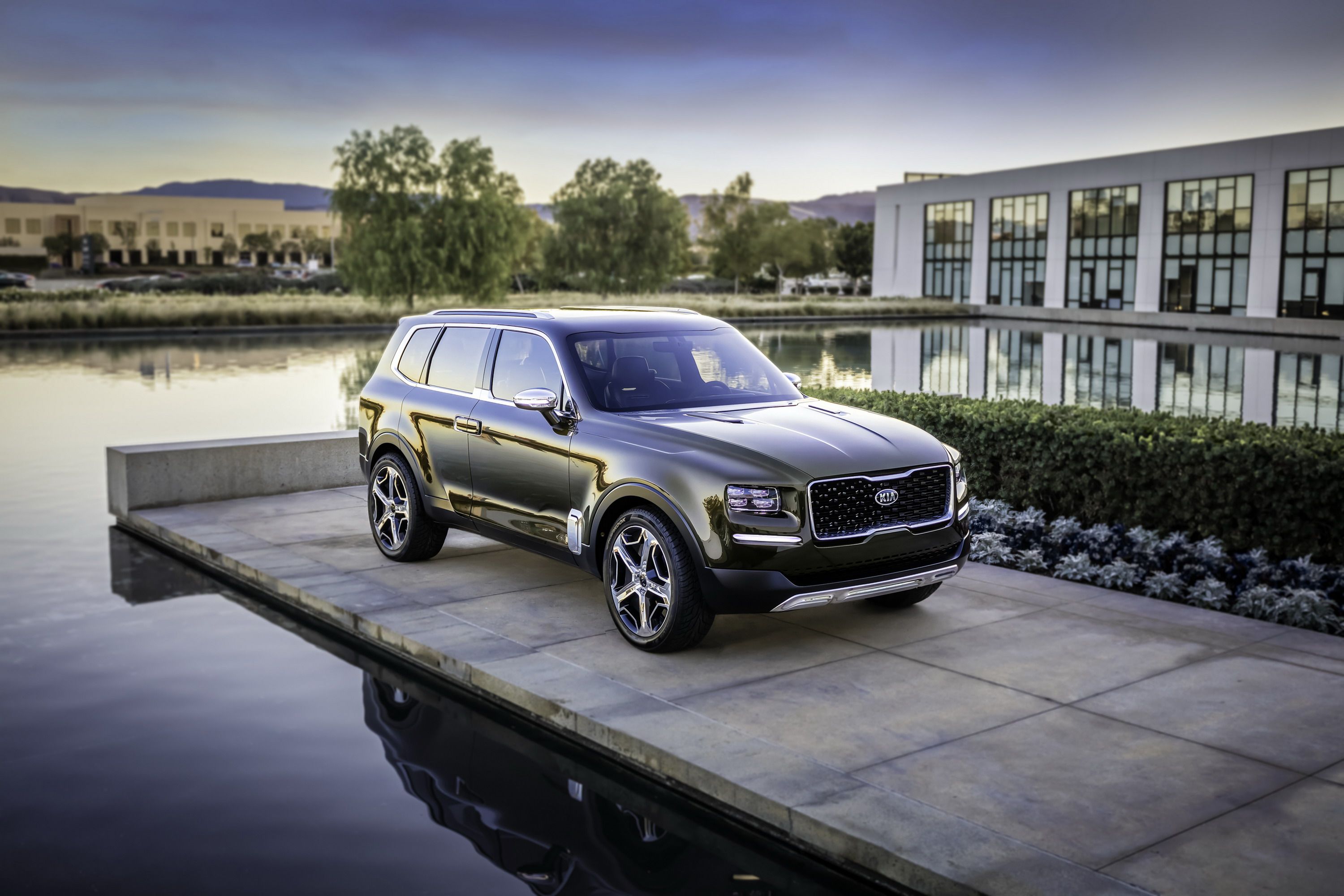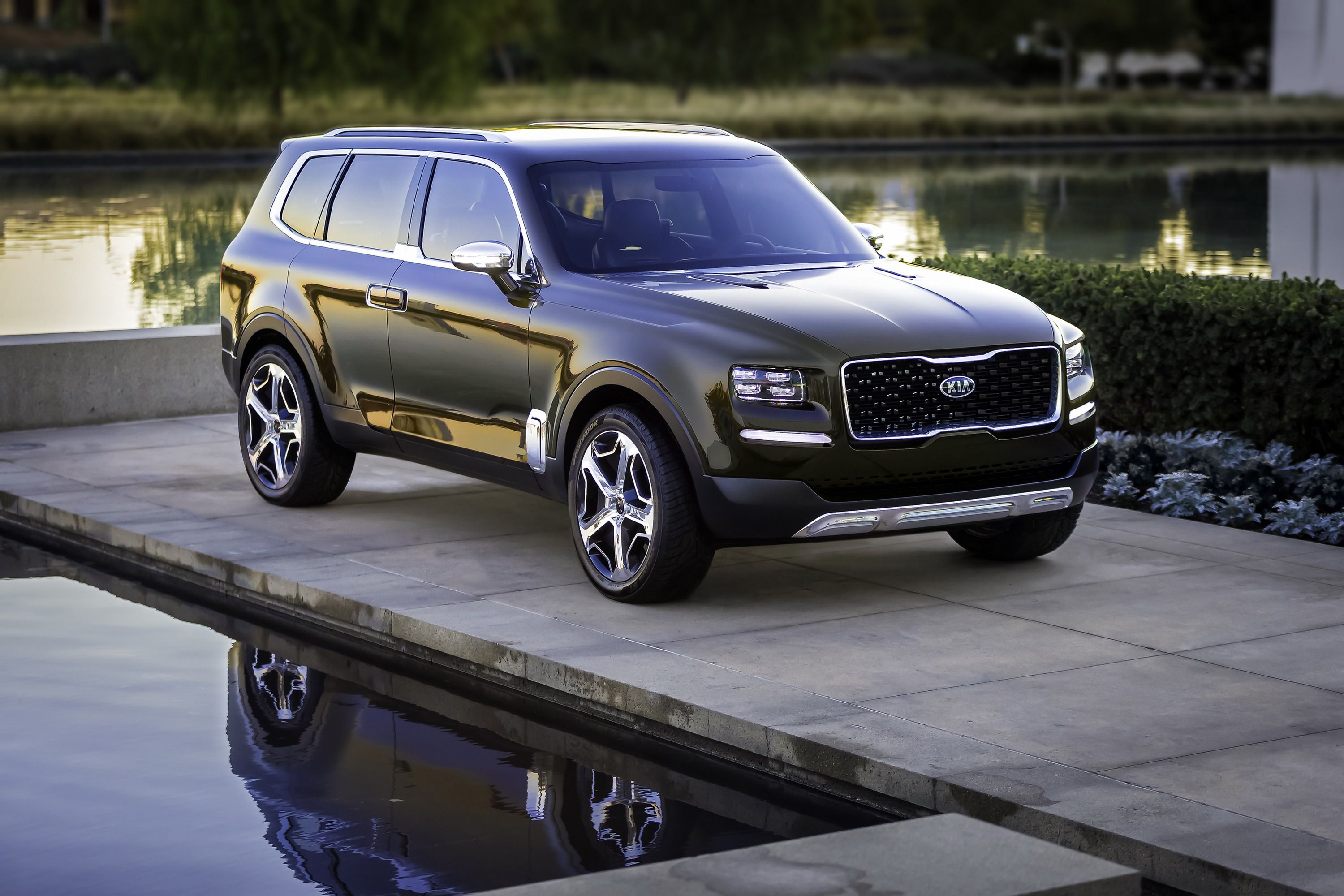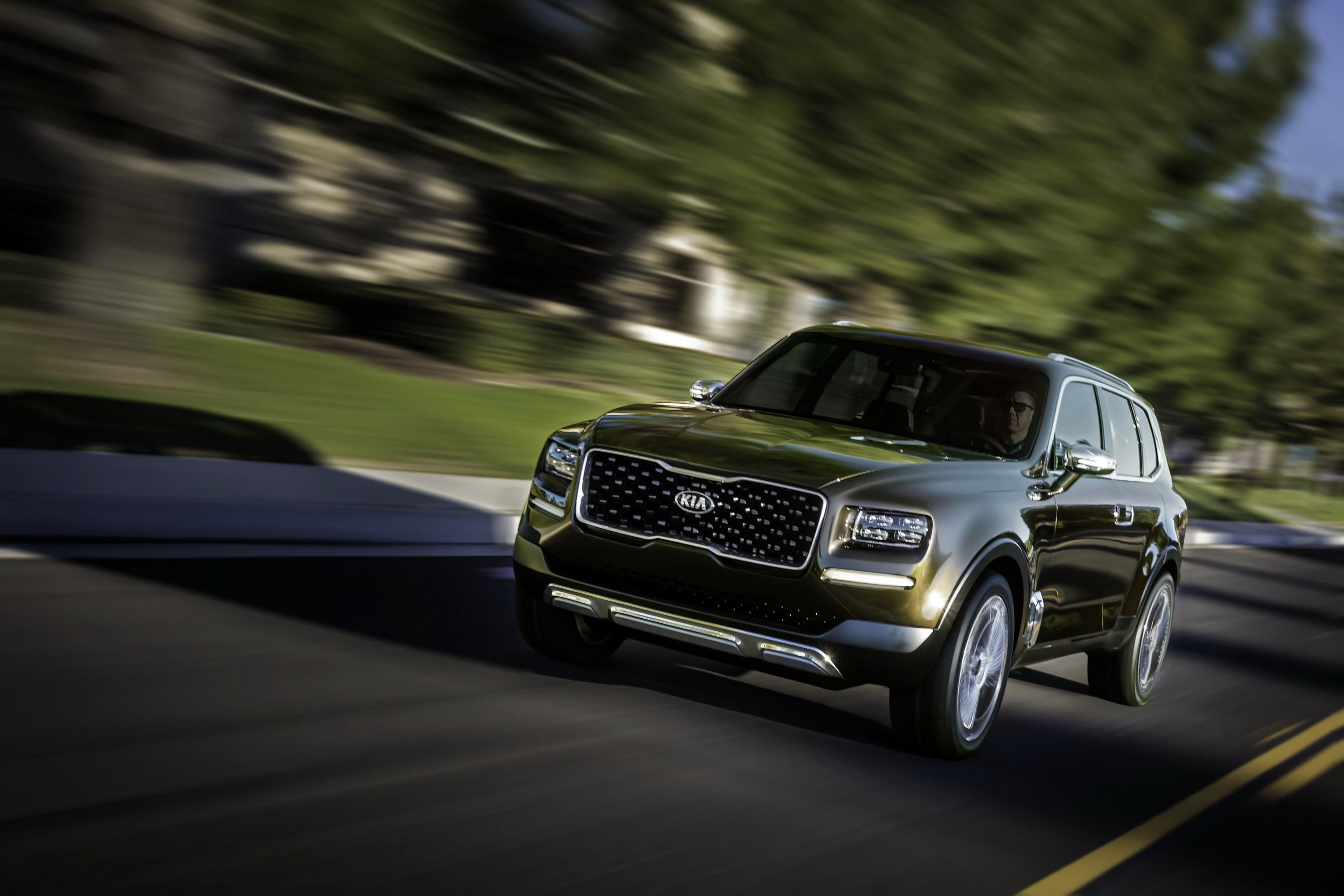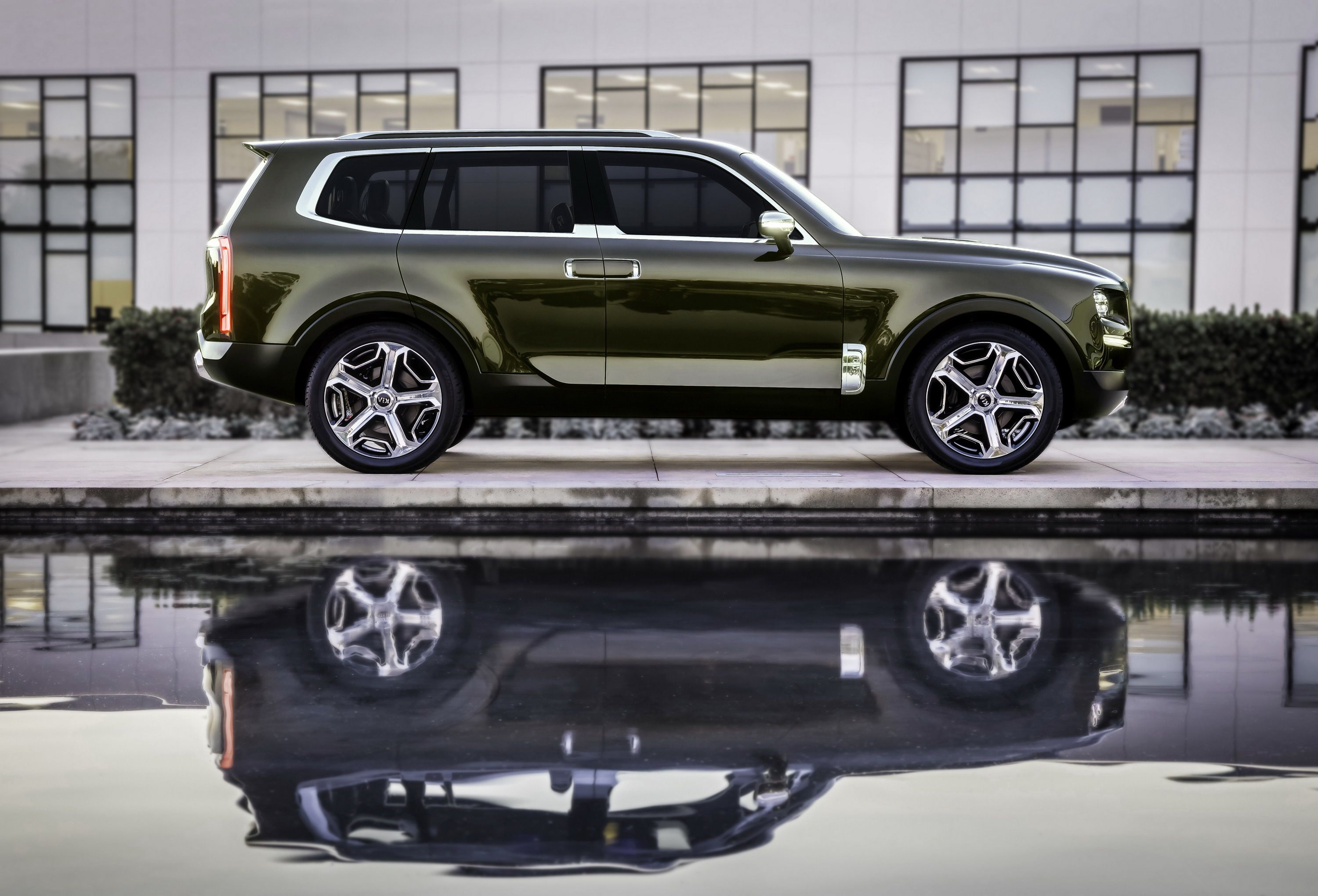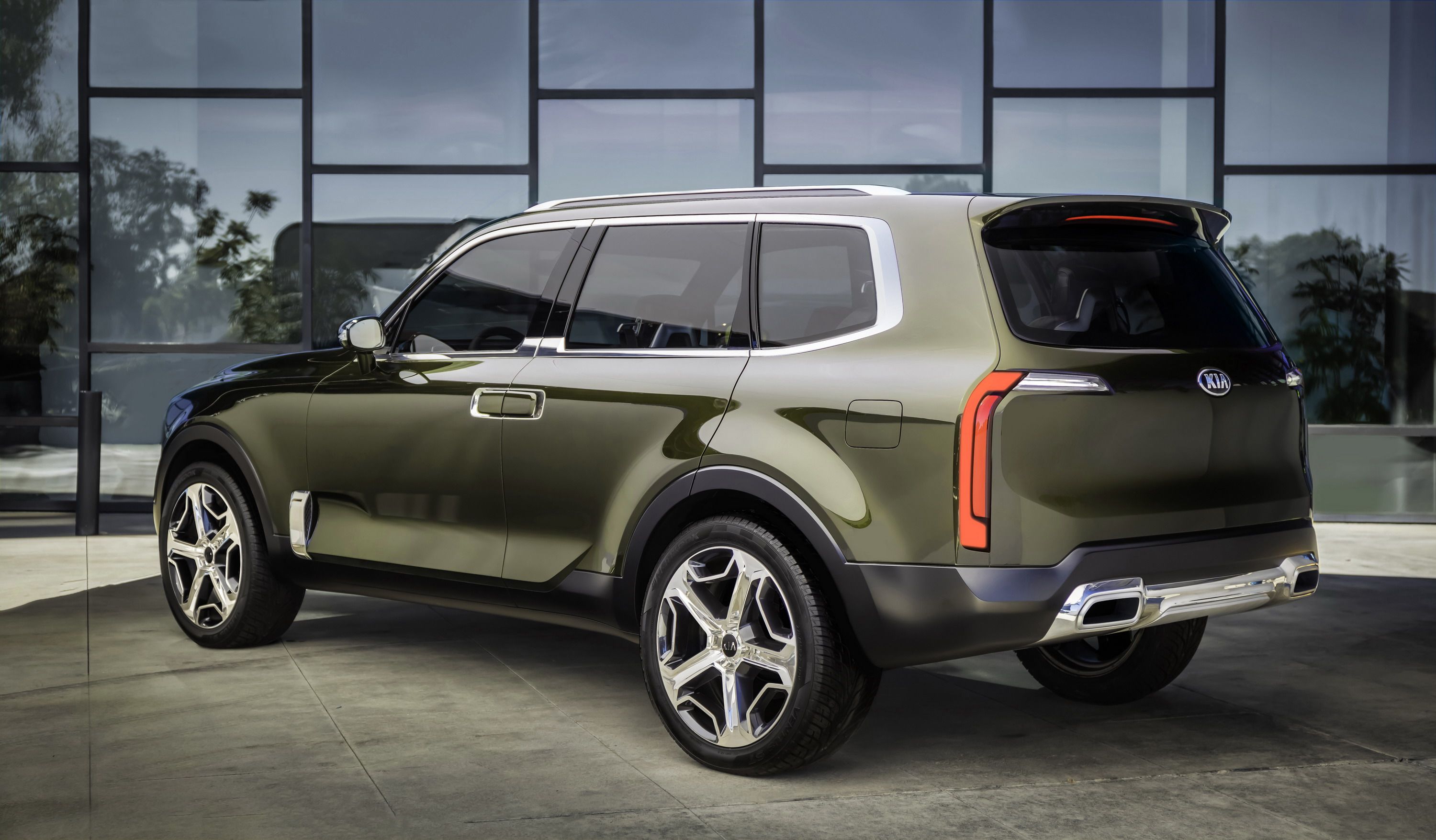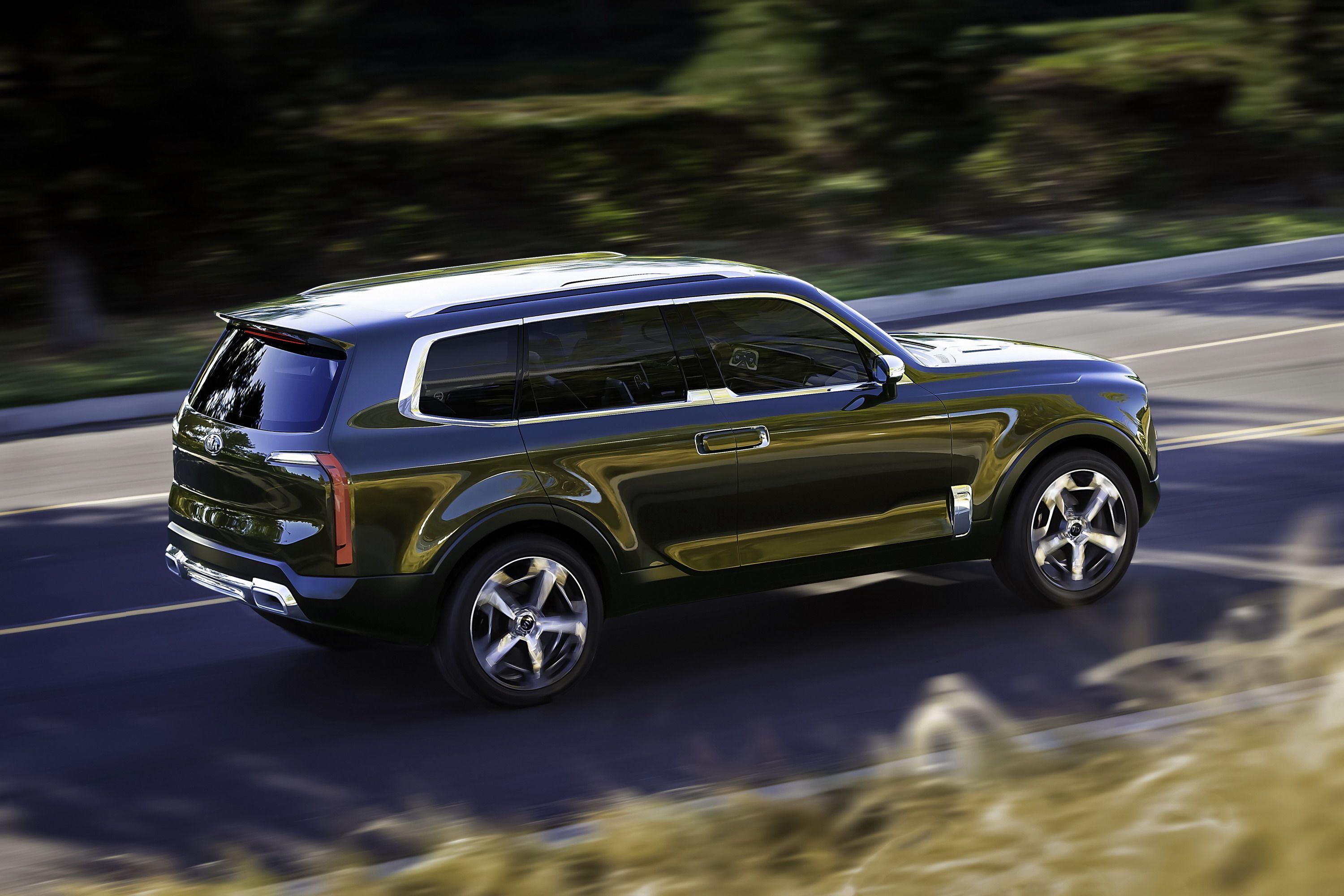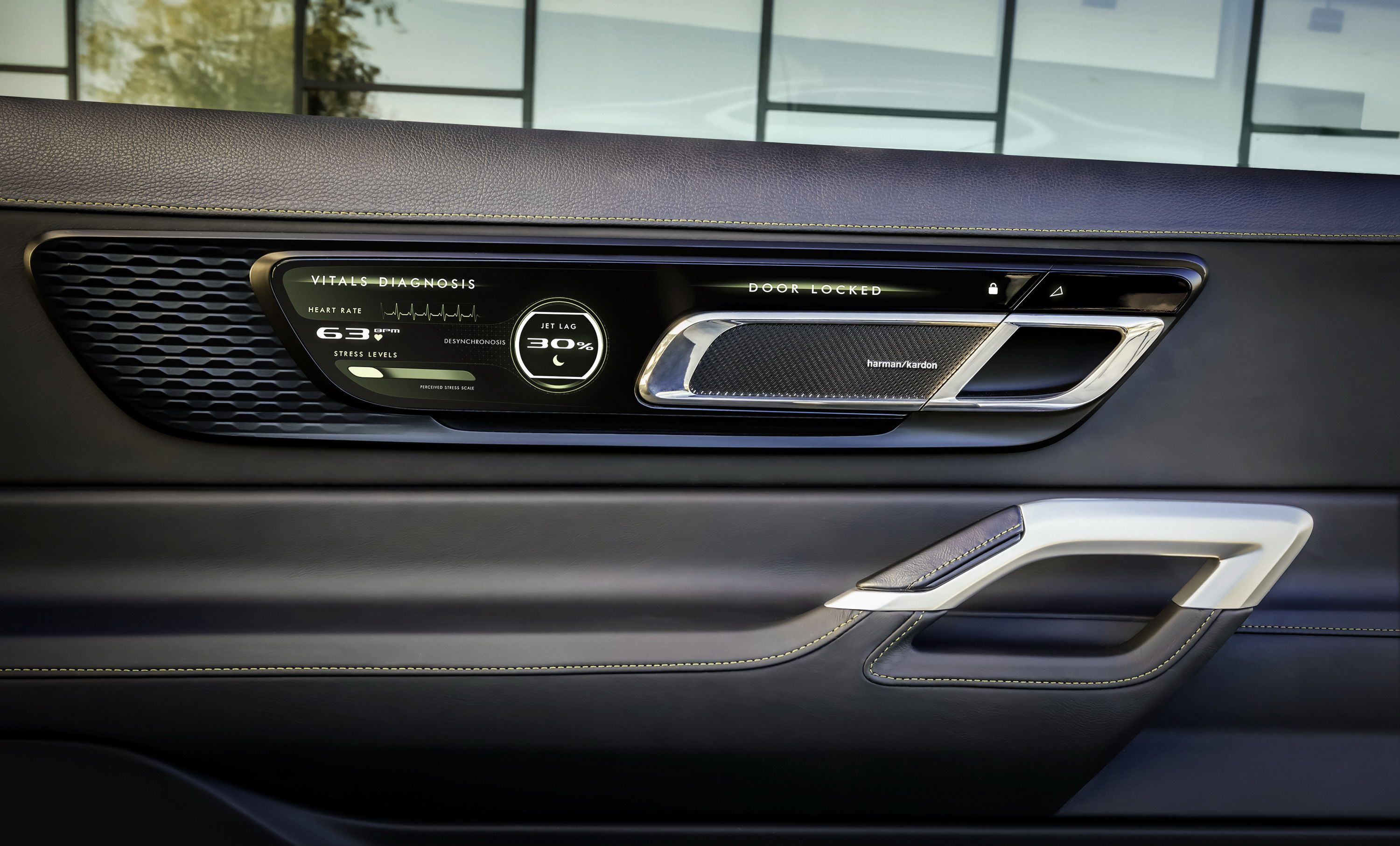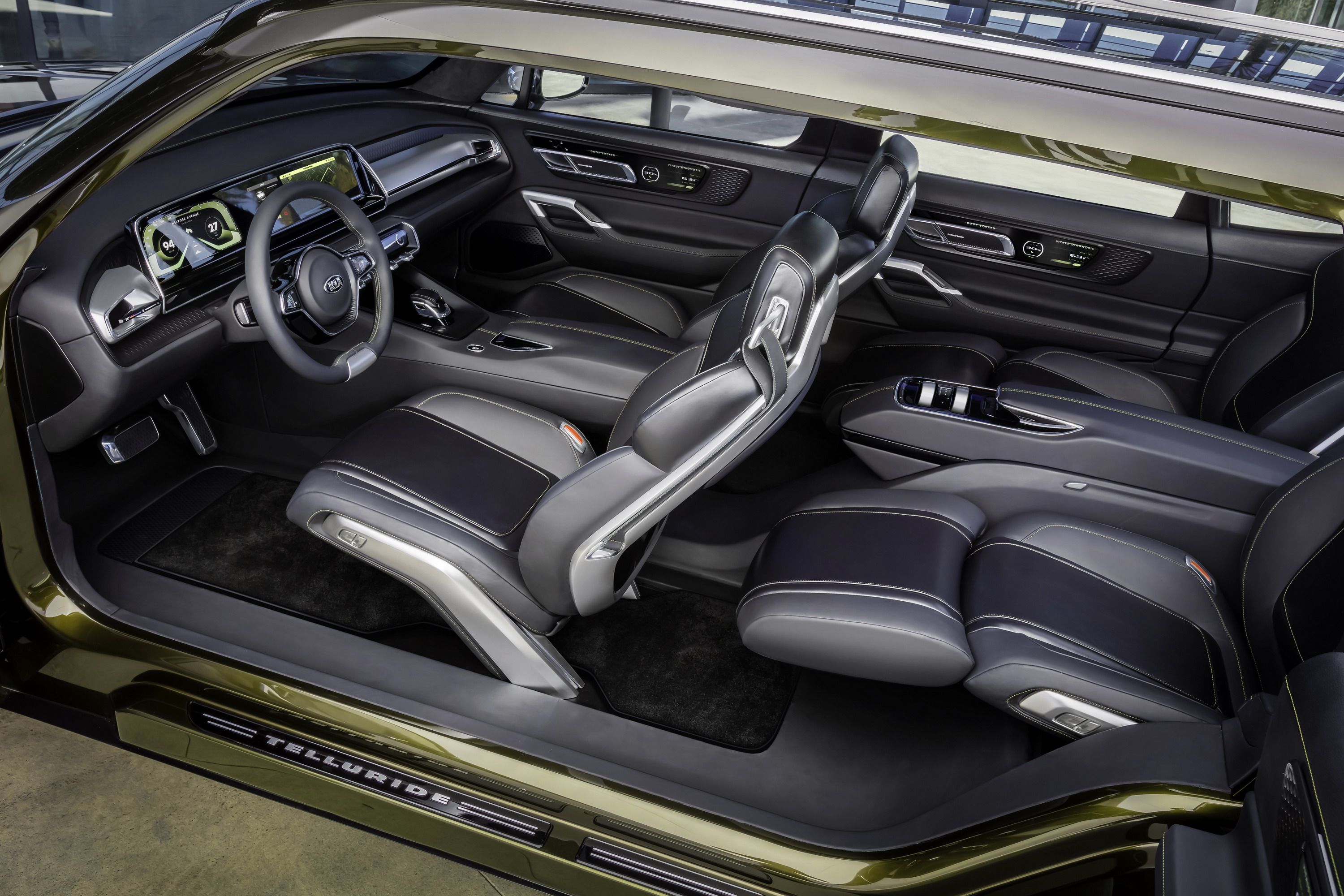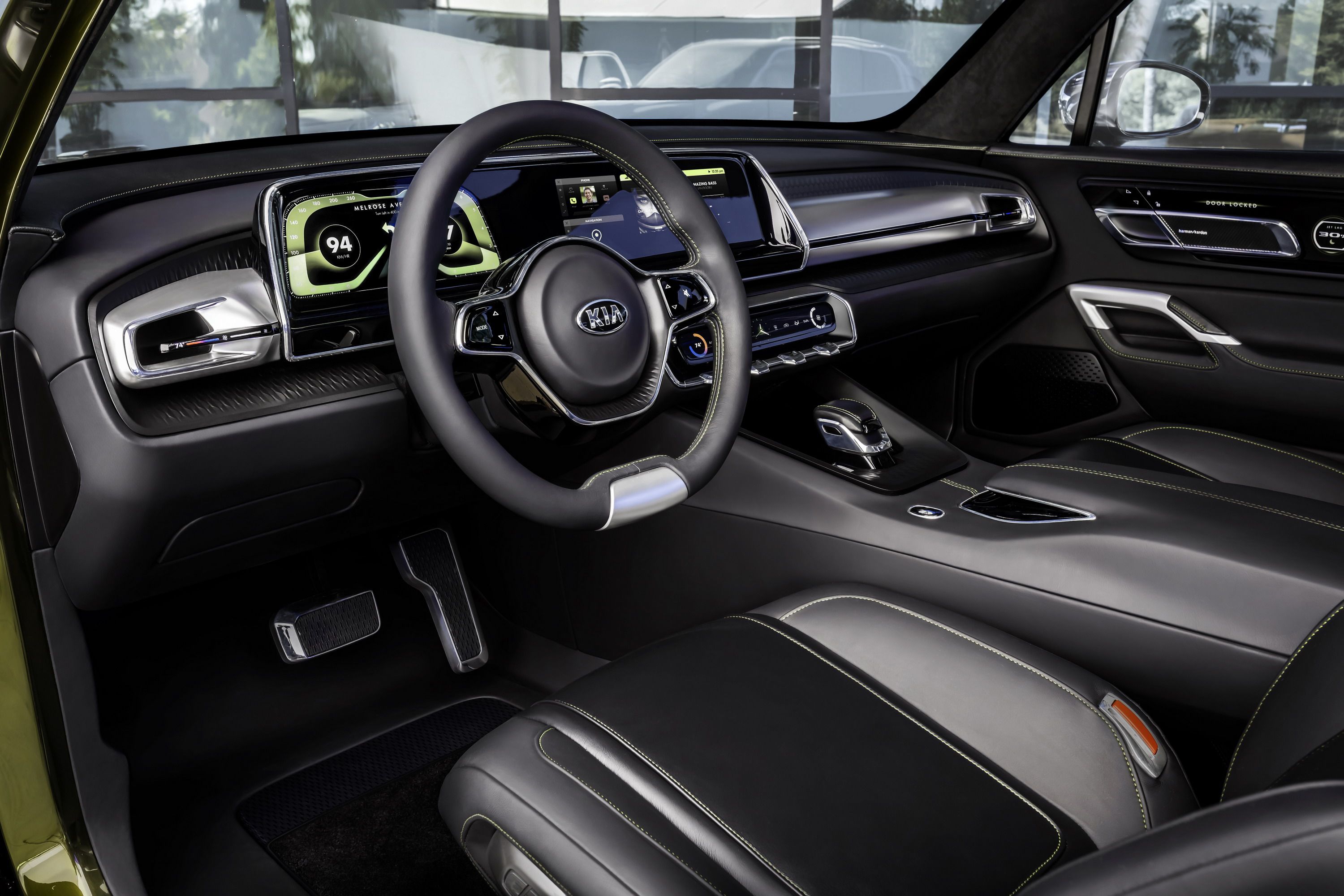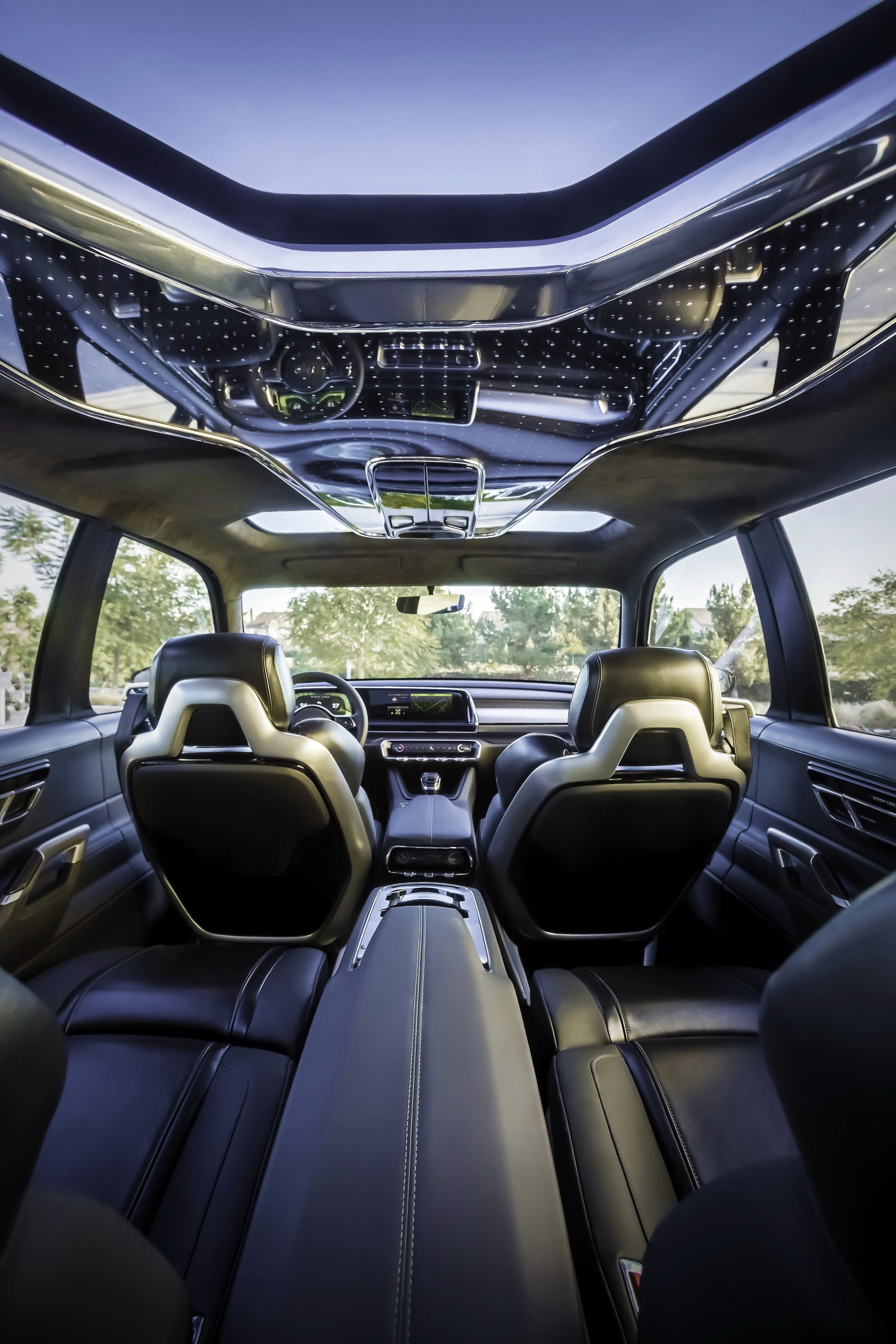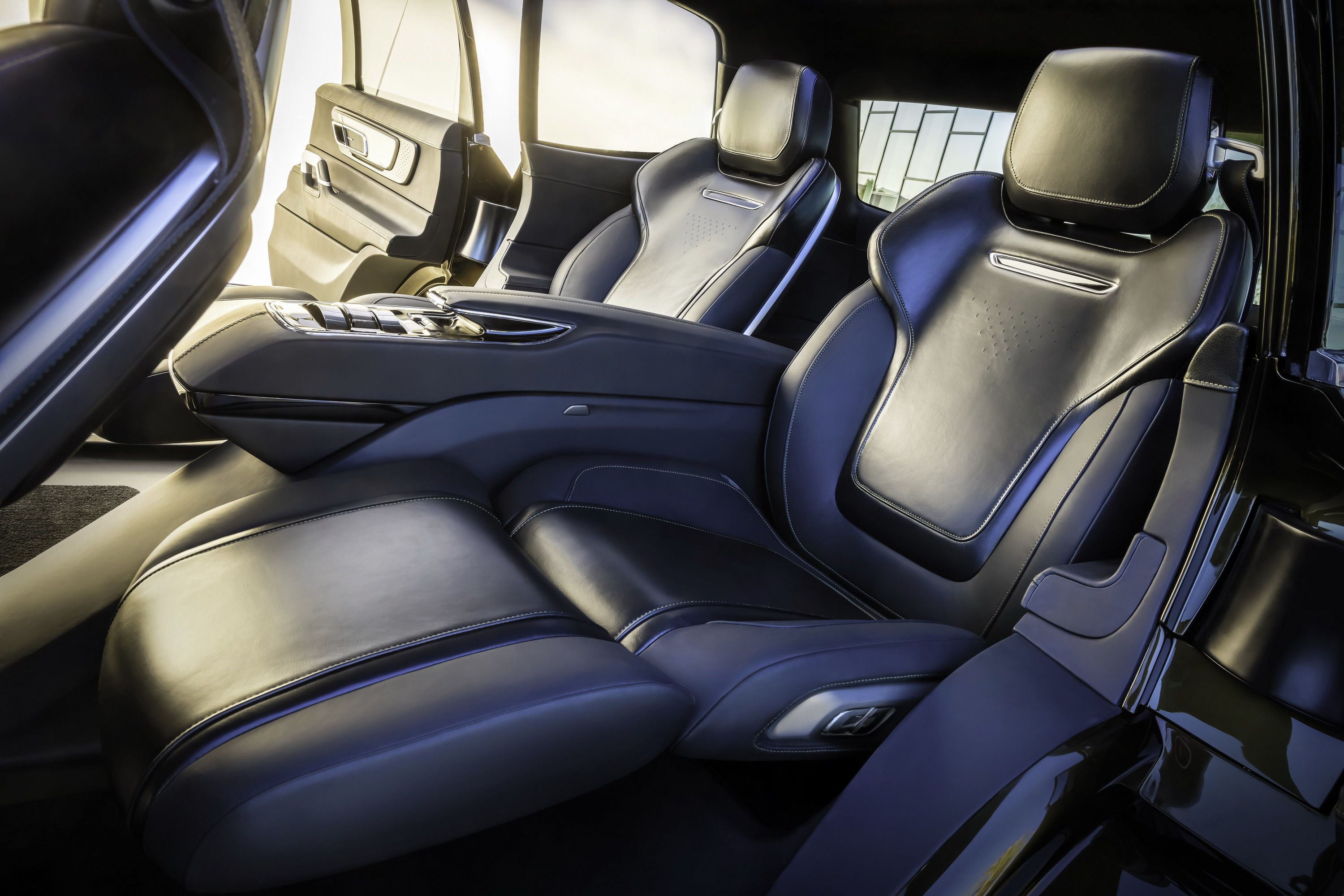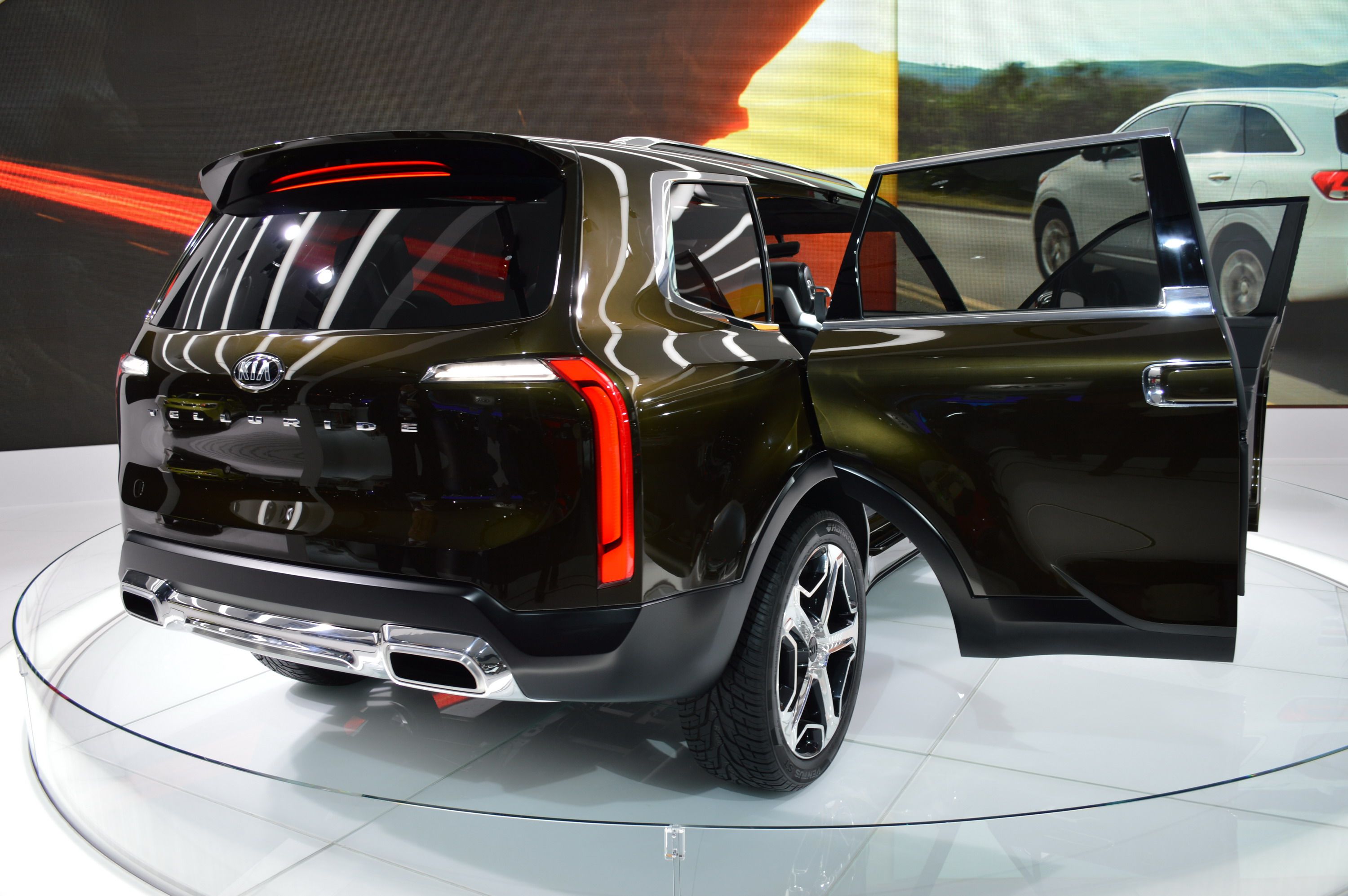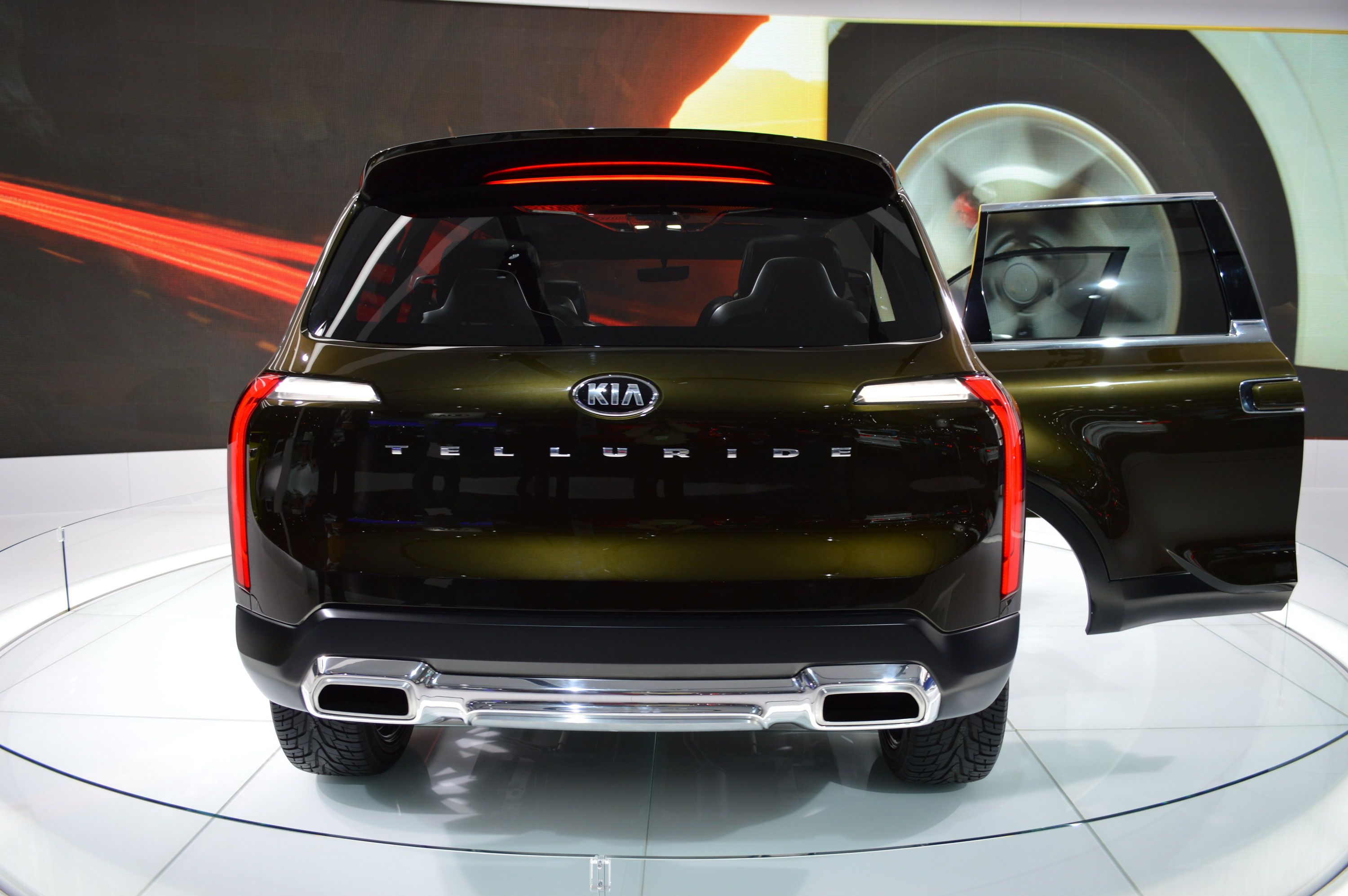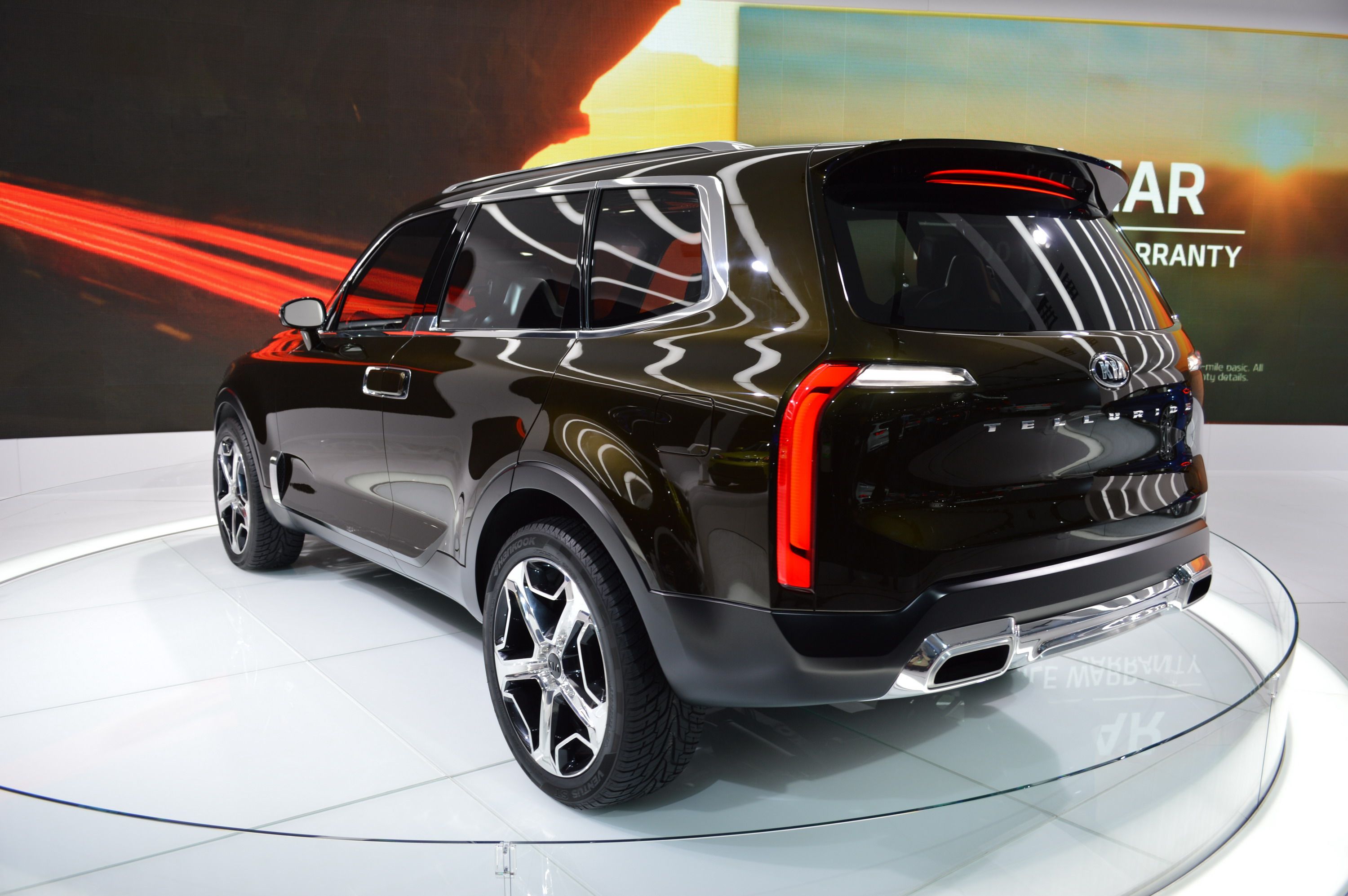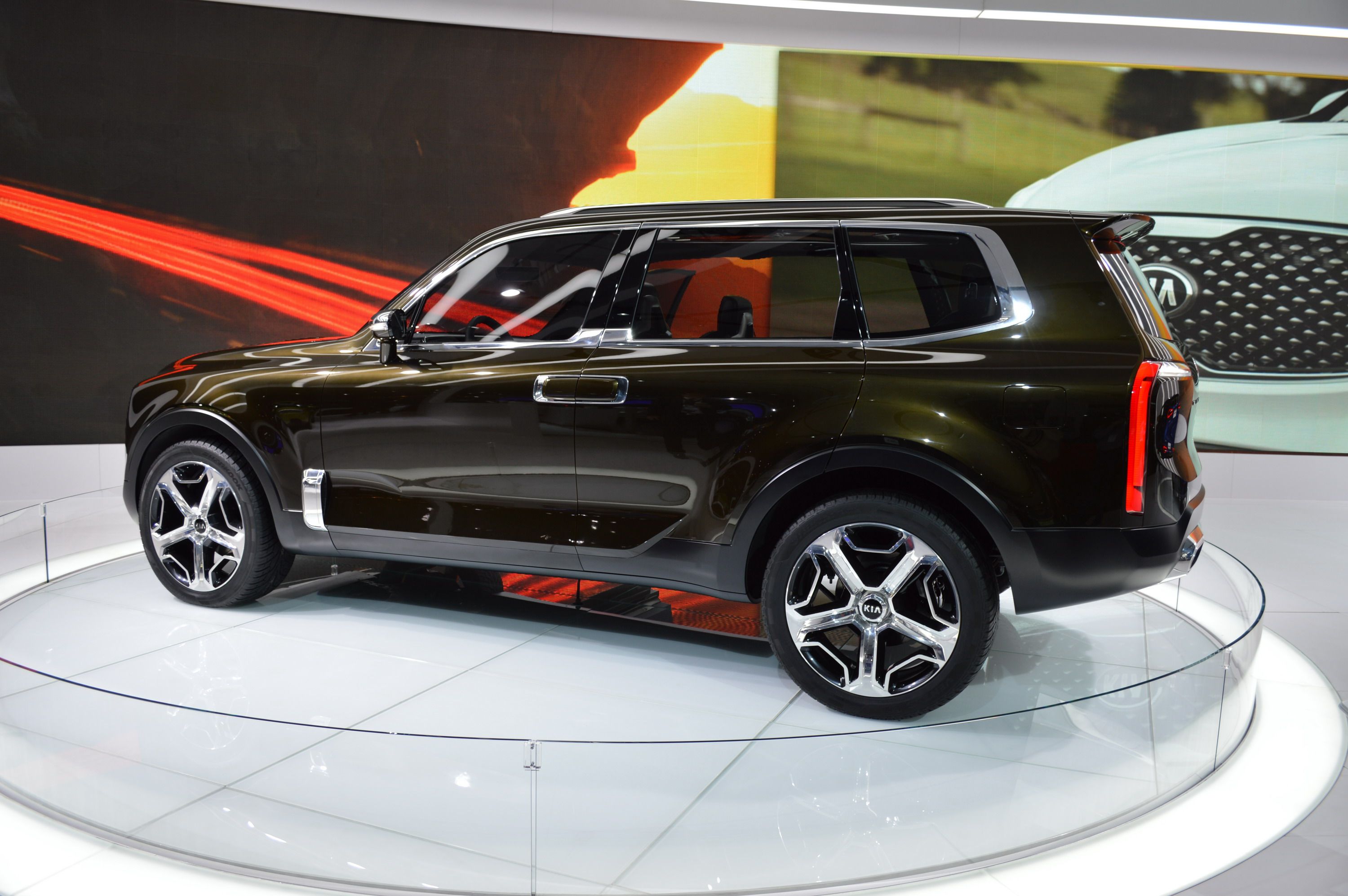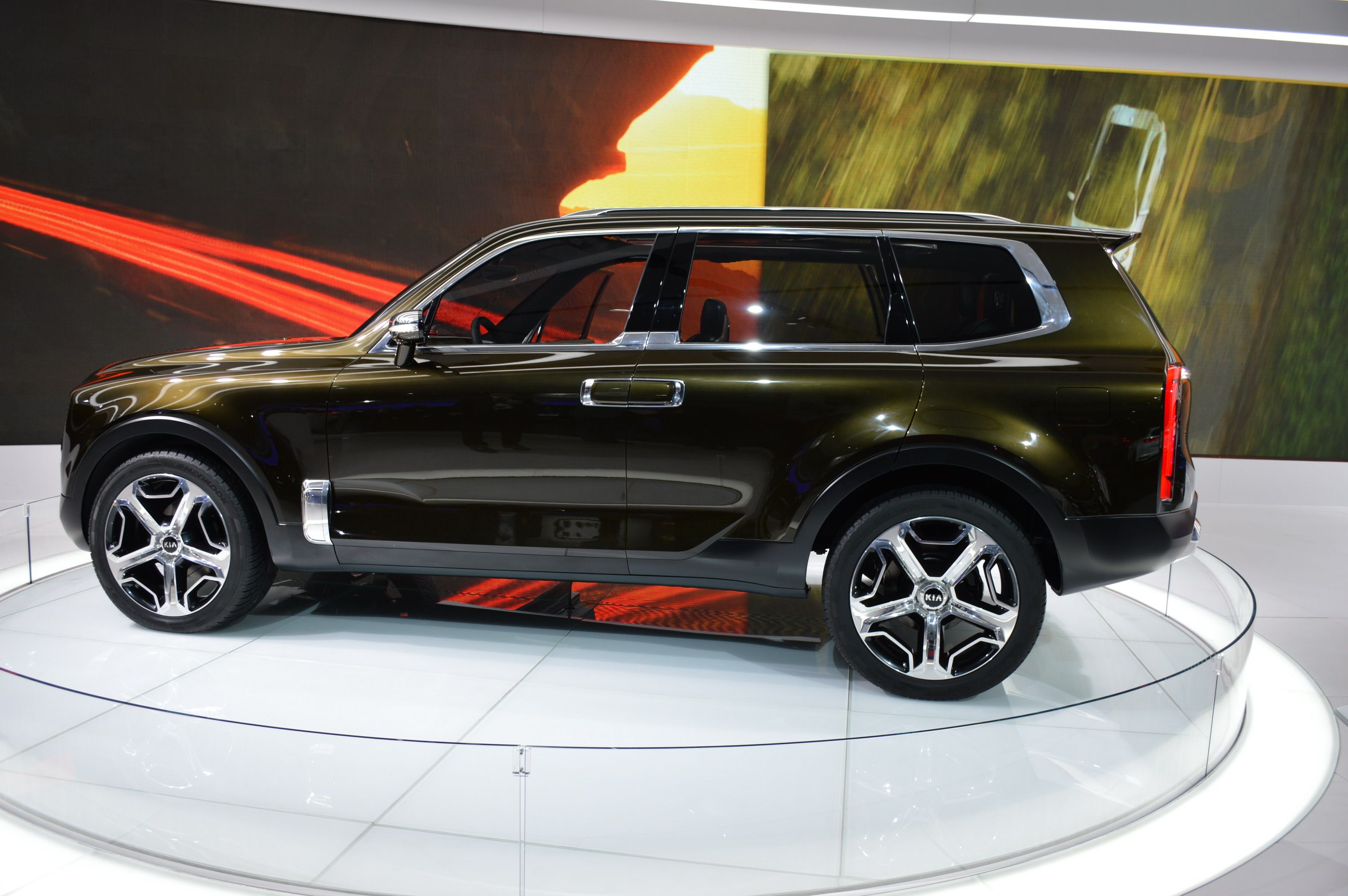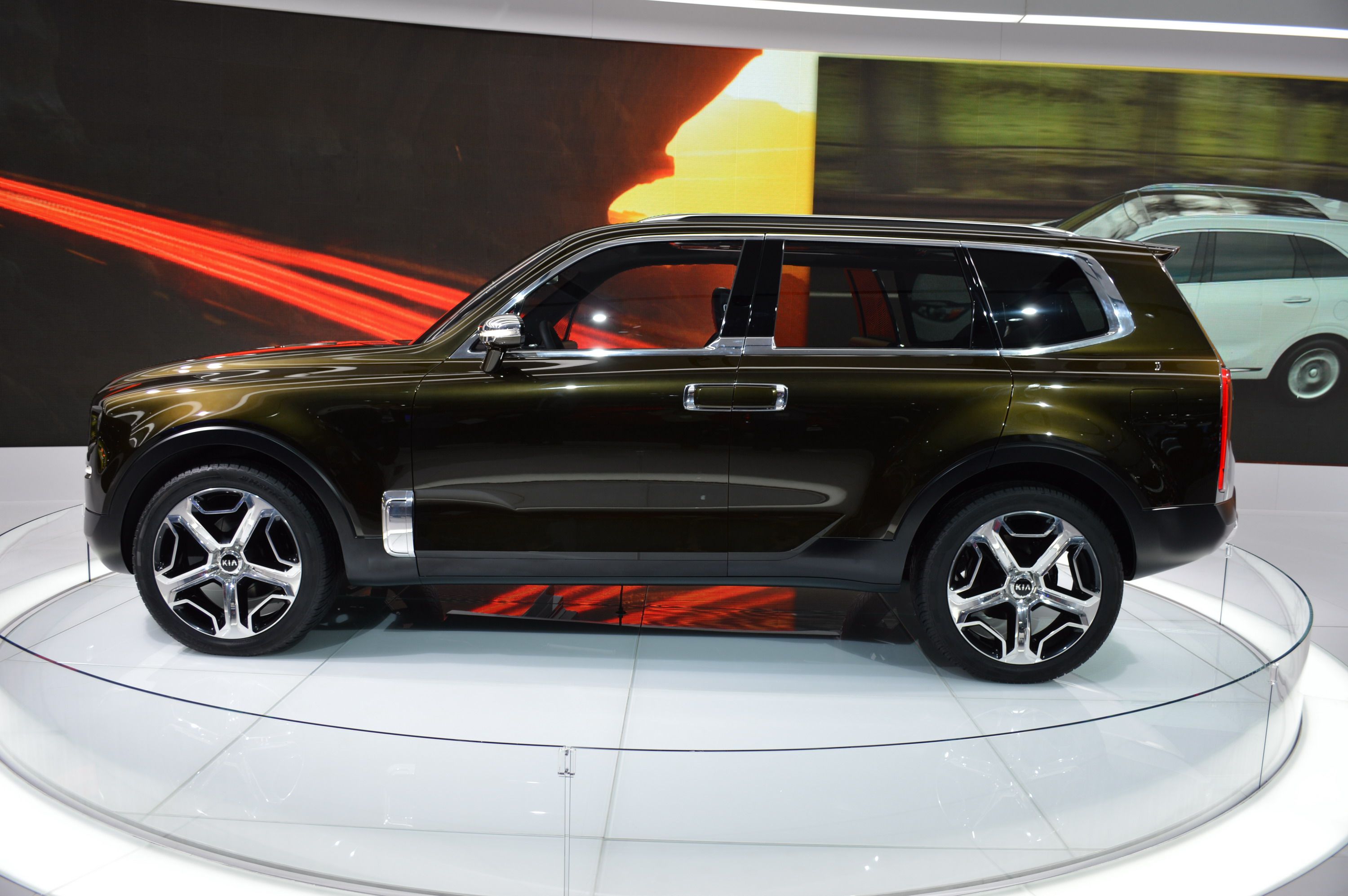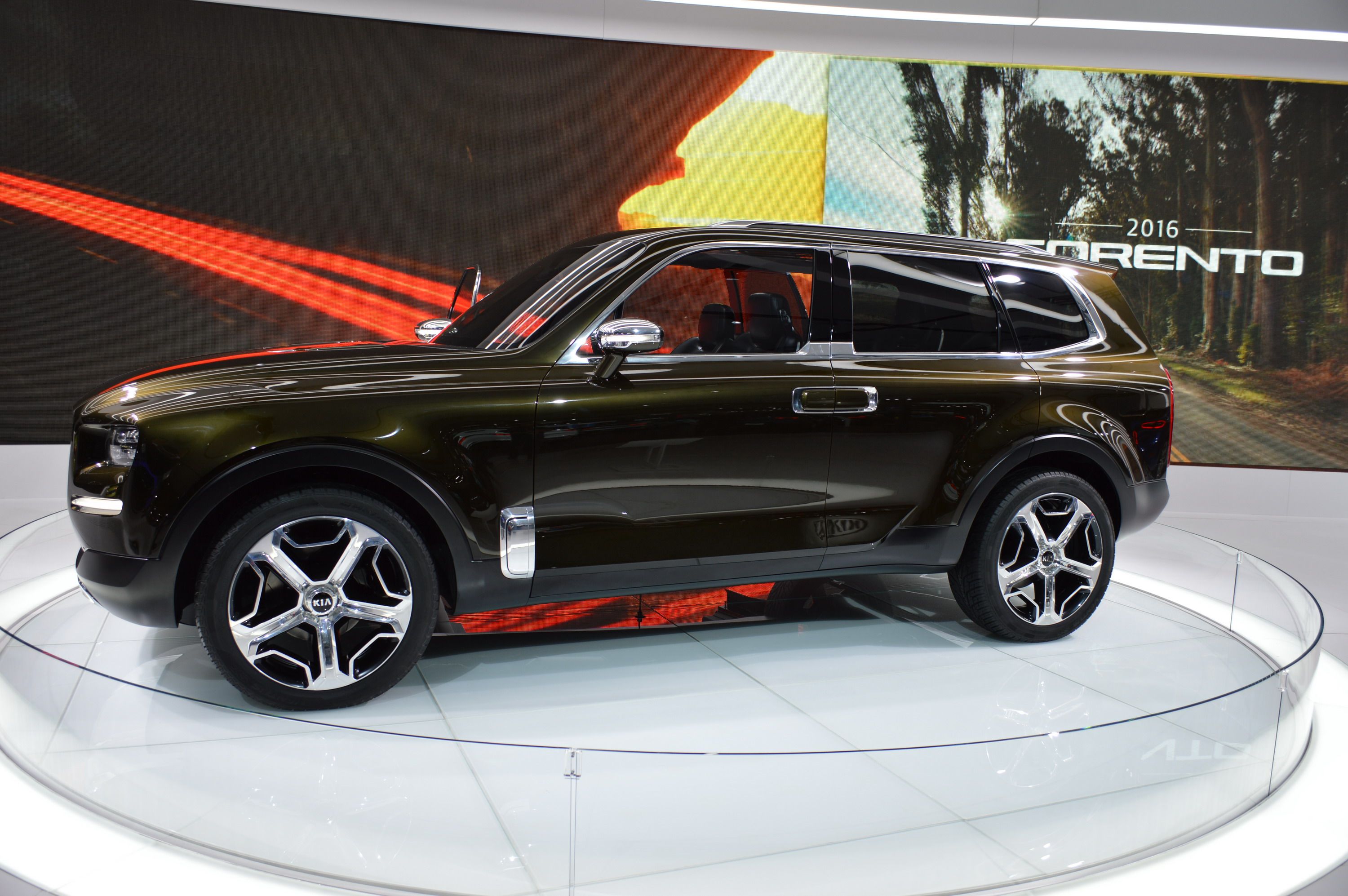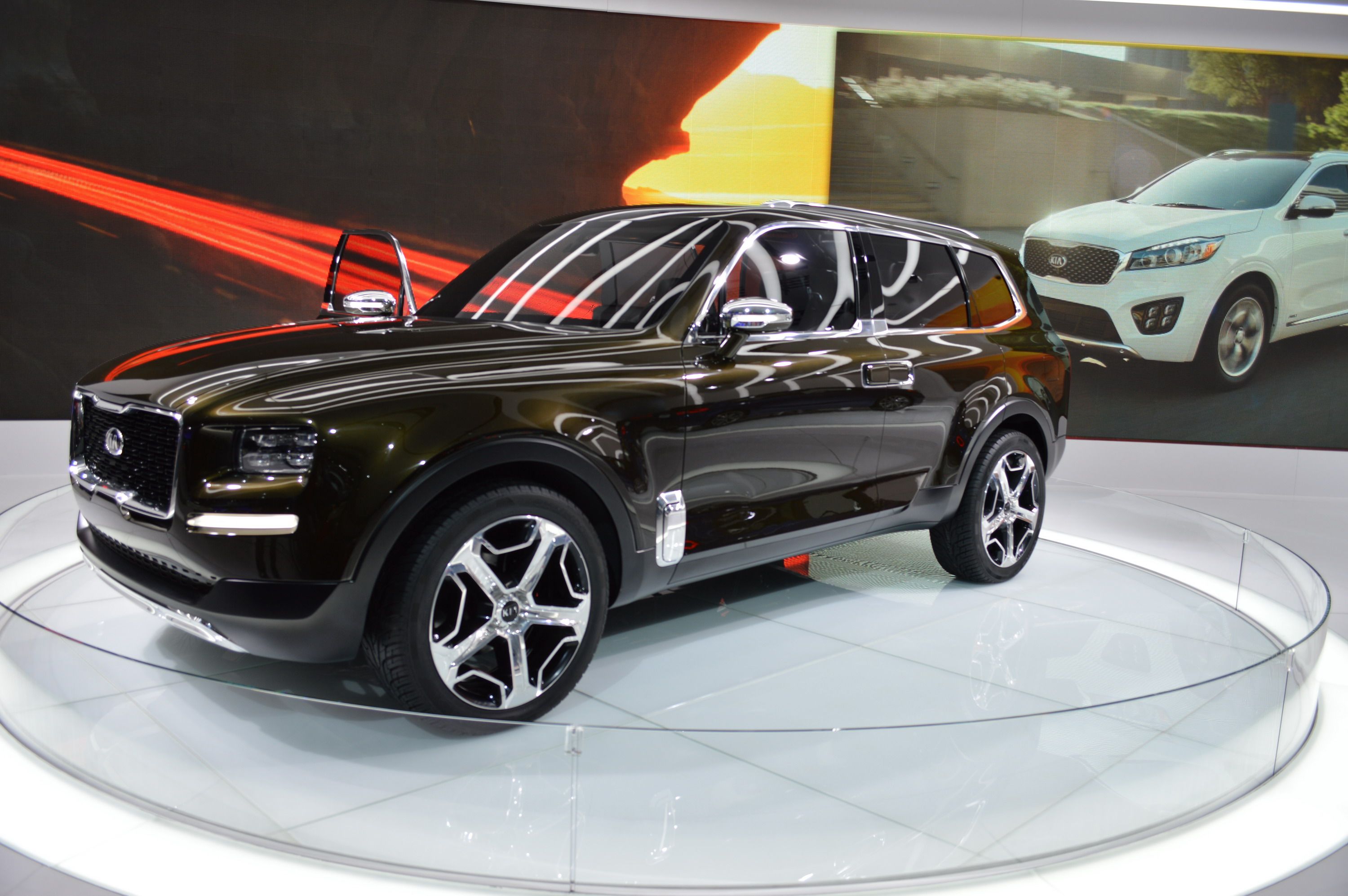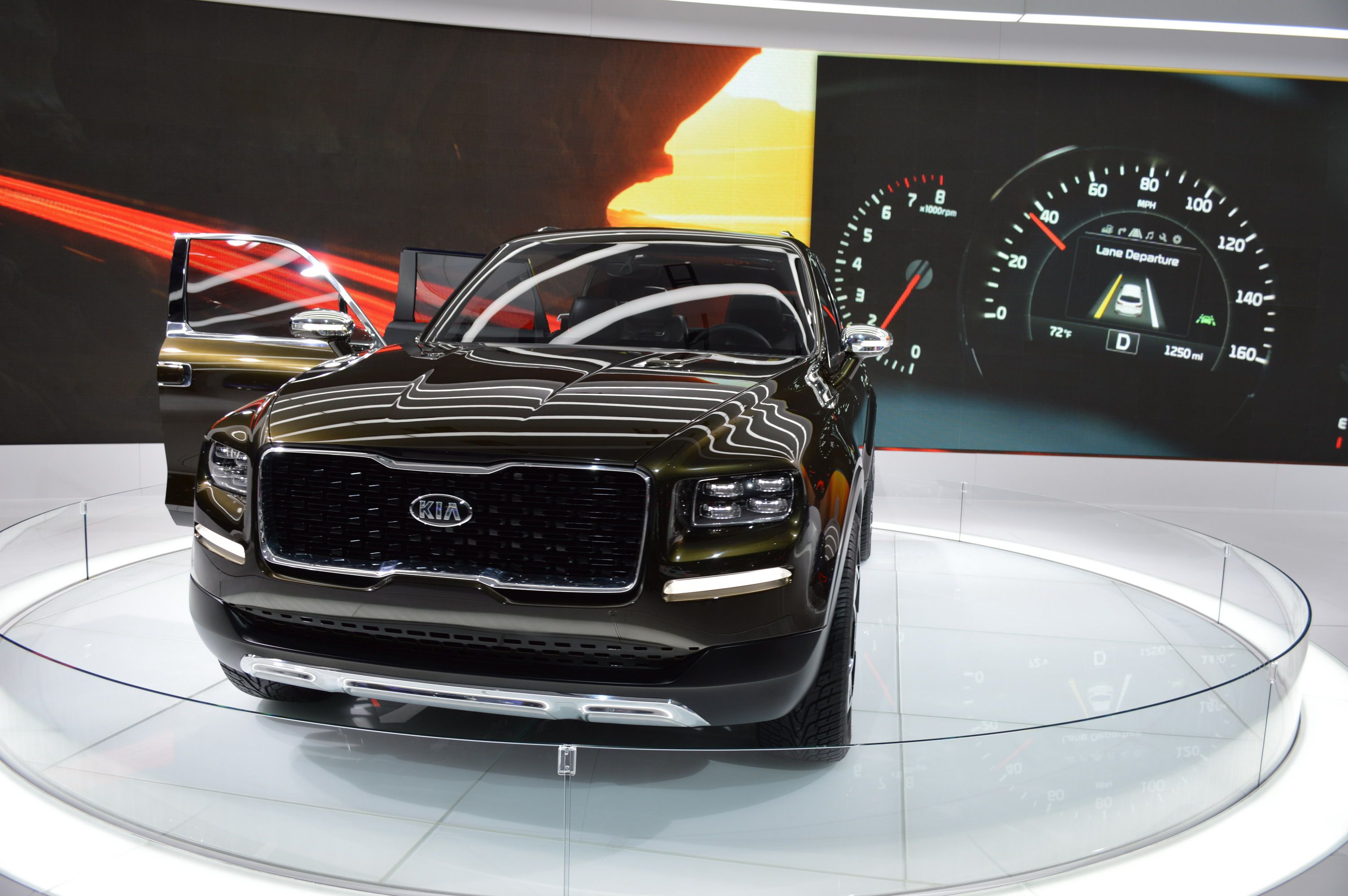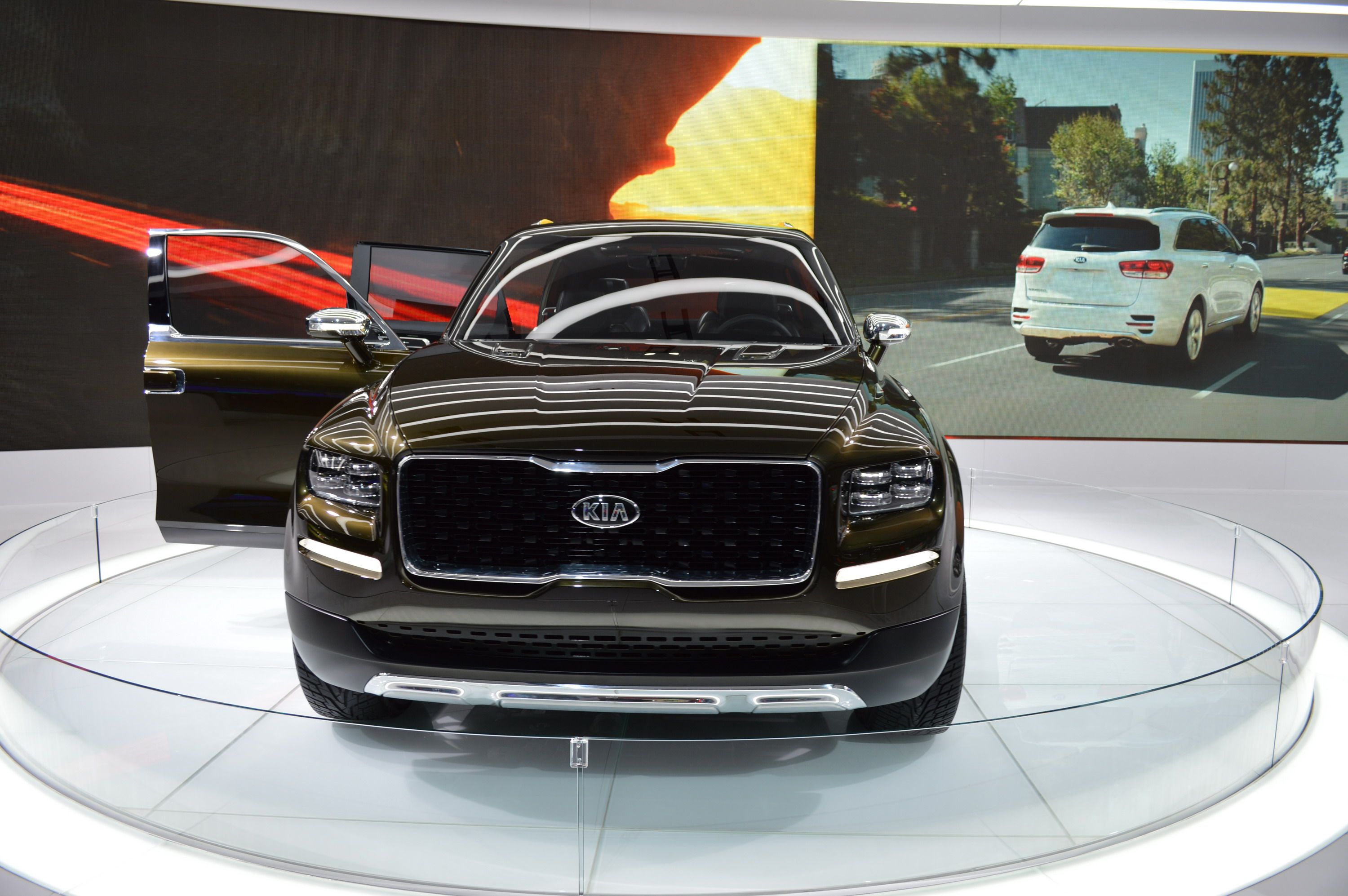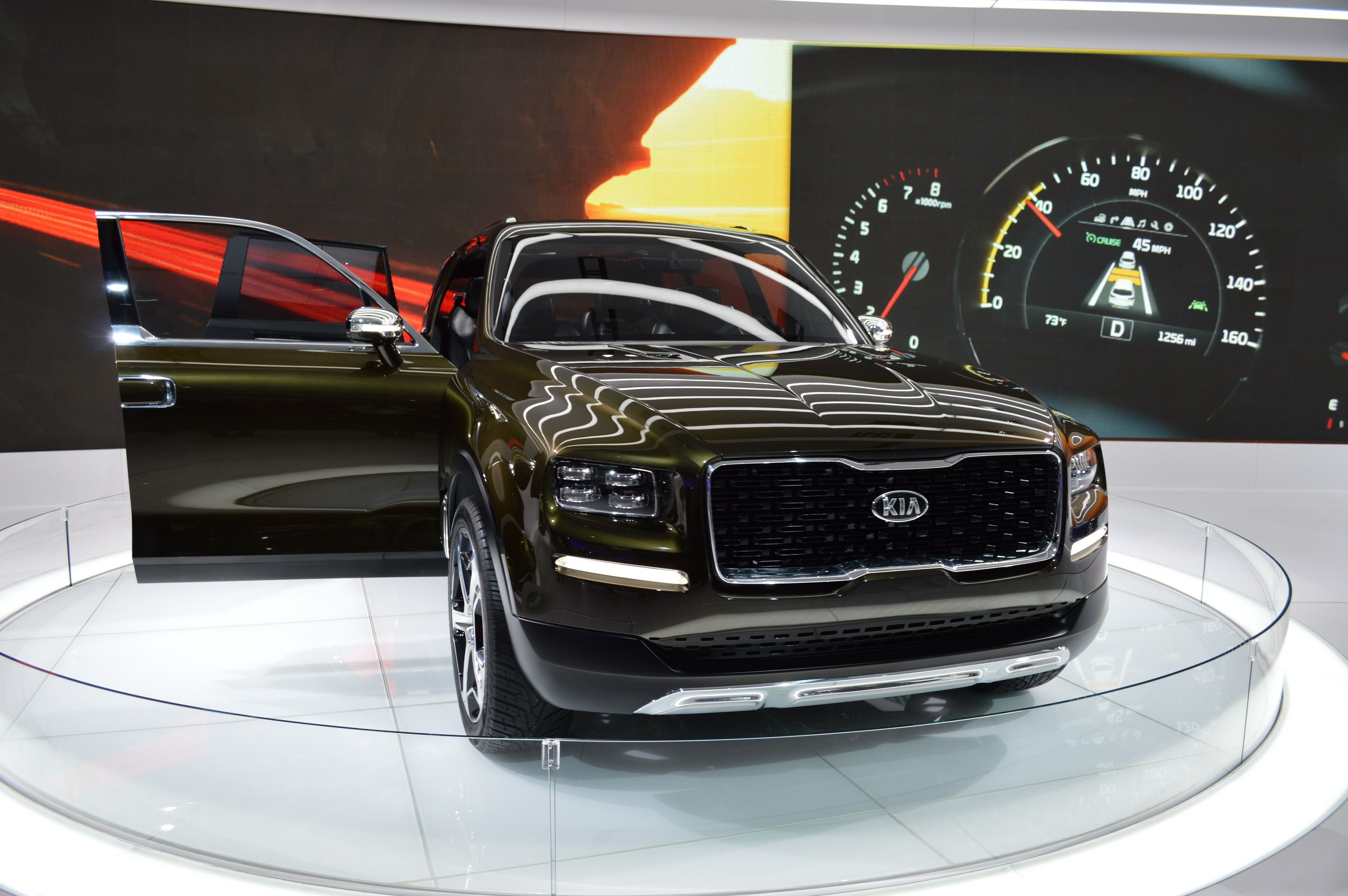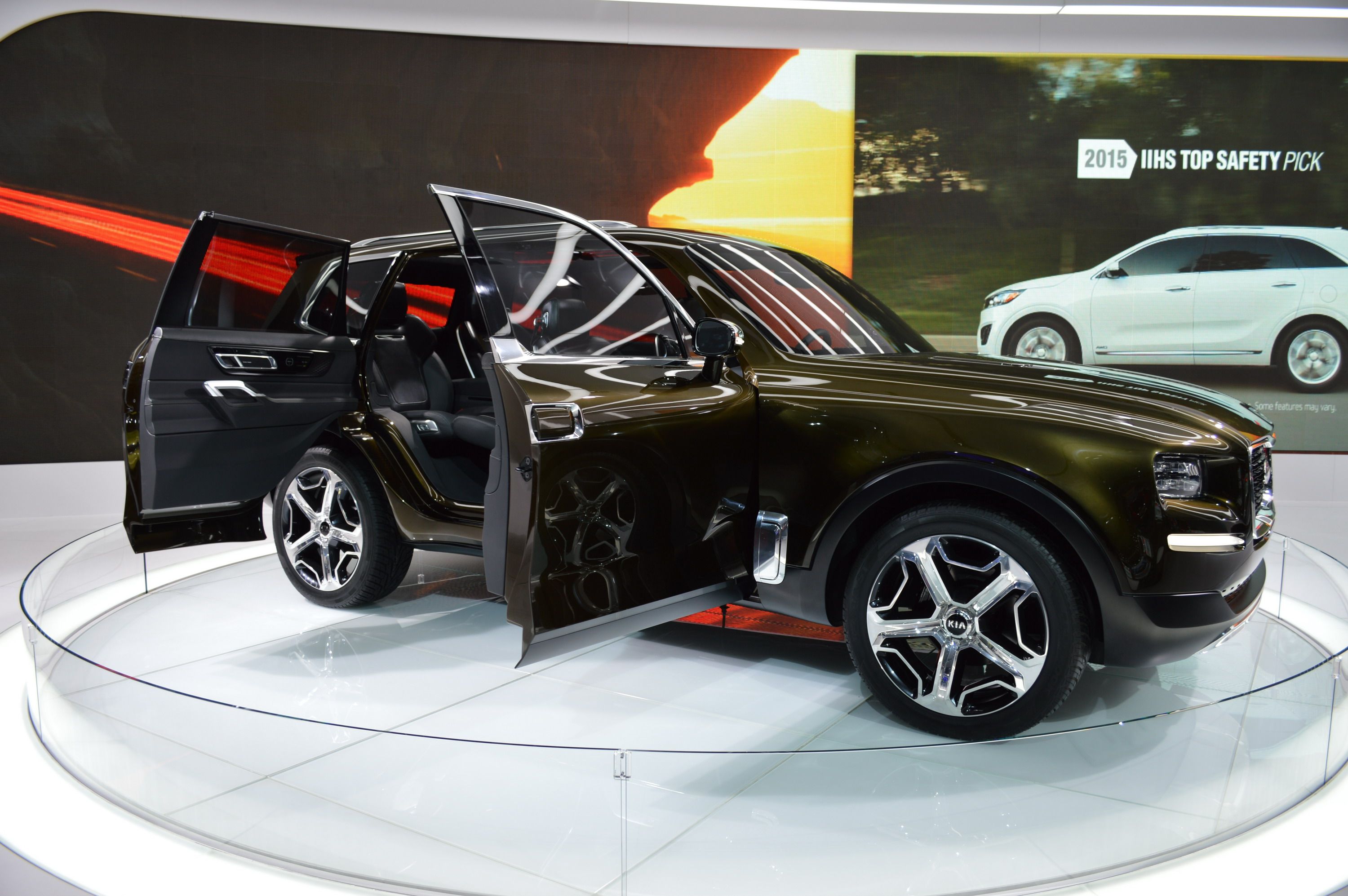Kia’->ke41s vision for a future full-sized luxury->ke505 SUV that will sit above the Kia Sorento took shape at the 2016 North American International Auto Show->ke222 with the debut of the Kia Telluride Concept.
The three-row, seven-seater SUV->ke145 concept->ke169 is actually based on an existing platform that already underpins the Sorento.->ke41 To accommodate the bigger size of the Telluride, Kia stretched the wheelbase of the chassis to 121.3 inches, almost a foot longer than the wheelbase of the Sorento. Its massive size notwithstanding, the Telluride also comes with a dramatic body design that’s fixing to attract its fair share of fans. Inside, Kia loaded up on the technology,->ke1701 even though most of them is unlikely to make it to production anytime soon.
The whole SUV, for that matter, is simply a “theoretical” exercise for Kia so even if the Telluride does get positive reviews from the gathered folks at Detroit, there are no assurances that Kia will proceed with a production version anytime soon. That’s not to say that a full-sized luxury SUV isn’t going to happen for the Korean brand. It just means that we shouldn’t hold out hope of seeing the Telluride in showrooms in the near future.
Continue reading to learn more about the Kia Telluride Concept.
2016 Kia Telluride Concept
- Make: Array
- Model: 2016 Kia Telluride Concept
- Engine/Motor: V6
- Horsepower: 400
- Torque: 280
- [do not use] Vehicle Model: Array
Exterior
The exterior of the Telluride Concept is the unquestioned highlight of the entire package. Dressed in a Dark Pyrite Green finish, the Telluride is what I like to call a retro design done right. It eschews the curvaceous styling characteristics of today’s SUVs in favor of a muscular and more upright stance. The front end, in particular, has the styling feel of those old school American trucks. Kia’s “tiger nose” grille is still there, but even that comes in a no-frills, rectangular shape that’s a far departure from what we’re used to seeing in other Kia models. To keep some resemblance of modernity, the Korean automaker installed quad-LED headlamps and horizontal LED indicator lights. Kia even separated the two to create a little bit of distinction and balance on a front section that’s otherwise dominated by that tiger nose grille. A polished-metal skid plate just below the bumper rounds out the details of the Telluride’s impressive front end design.
The side profile of the full-size SUV concept follows the same design treatment. There are no excess curves that takes away from the identity of the full-sized SUV. The high shoulder actually extends from the top corner of the headlights all the way to the vertical taillights, creating a unified look that, in my mind, is another strong suit of the Telluride’s overall aesthetics. The doors are predictably of the concept variety, specifically the suicide doors on the rear. It’s one of the few modern innovations of the Telluride’s exterior and one that actually makes for a welcome addition in the segment.
The rear section is somewhat muted, although I suspect that Kia intentionally did this to remain consistent with the SUV’s overall design language. The only prominent details are the pair of thin, vertical taillights, the rear spoiler on the roof that also incorporates the horizontal brake lights, and the dual exhaust tips.
The SUV’s dimensions fit its billing as a full-sized, luxury SUV. It’s 196.9 inches long, 70.9 inches tall, and 79.1 inches wide, making it 9.5 inches longer, 4.4 inches taller, and 4.7 inches wider than the current Kia Sorento. No wonder Kia described the Telluride as a potential preview of a future luxury SUV that would sit above the Sorento. Rounding out the exterior design are a set of new 22-inch five-spoke wheels wrapped in Hankook Ventus ST 275/45R22 tires.
Interior
I still don’t know if it’s a good thing or a bad thing, but there are far too many things going on in the interior of the Telluride. On one end, the configuration of the cabin fits the bill of what I like in a full-size SUV. The four captain chairs make up the first two rows and the entire cabin is spacious enough for the middle seats to have large fold-away footrests. When not in use, these footrests can be folded neatly, creating more legroom for the occupants. The foldable third-row bench seats are largely an afterthought. It’s those captain chairs that’s really important for Kia. See, each of these seats are embedded with Smart Sensors that can read the vital health information of its occupants. These sensors work in concert with a Light Emitted Rejuvenation (LER) system that can supposedly improve the passengers’ energy levels through an LED panel under the sunroof that displays a veritable light show of sorts.
Kia didn’t cite any medical references behind the effectiveness of this system so I’m taking this one with a pinch-full of salt until there’s actually enough data to back it up. In any case, it’s a fancy addition that’s unlikely to make it to any production model in the near future.
The other bit of technology, and one that’s a lot more attainable for modern-day use than the LER system is Swipe Command - a touch-sensitive, interactive band mounted to the second row center console. The band works like a display unit in the dashboard, giving occupants in the rear seats access to a plethora of media options that can be played through a seven-speaker Harman Kardon system or portable Harman Kardon headphones.
Wireless cell phone charging is also available on the Telluride and is located in a compartment in the center stack. Finally, the Telluride’s cabin also contains Kia’s first attempt at using 3D-printing technology. A handful of components on the dashboard, door panels, and steering wheel were created using 3D-printing.
Drivetrain
Lost in all the hullabaloo of the Kia Telluride’s incredible design and hyperbaric-like interior is a hybrid system that features a transverse-mounted 3.5-liter GDI V-6 engine and an electric motor. The former is responsible for 270 horsepower of the powertrain’s total output while the latter contributes 130 horsepower, bringing the total output to 400 ponies. No mention was made on how much torque the hybrid engine is capable of producing, but it wouldn’t be surprising to see those numbers reach around 280 pound-feet of torque.
Likewise, performance numbers weren’t mentioned and I’ll venture a guess that those figures aren’t important enough for Kia, given the Telluride’s concept status. The company did say that the hybrid powertrain can achieve more than 30 mpg on the highway, a figure that’s surprisingly modest on account of its hybrid makeup. The Telluride also comes with all-wheel drive system, meaning that all that power it generates is routed to the all four wheels.
Conclusion
The Kia Telluride is a perfect illustration of a company’s attempt to showcase a design that’s fit for the times and combined with technologies that aren’t quite there yet. It’s a little confusing, if I’m to be honest. On one hand, the Telluride looks like a million bucks. If Kia decided to launch it based on its looks, it’s going to attract a lot of potential buyers. On the other hand, the technologies in the cabin, specifically that LER system seems like a complete reach into the future. Functionally, it has a purpose, but the bigger question is if it actually works. Right now, Kia hasn’t shown that it can actually rejuvenate someone’s energy. I mean, isn’t it just as likely that the lights show can trigger an epileptic attack instead? Those are questions that are best served for another day. For now, I’m giving the Telluride high marks for its unique and purposeful look, with everything else filed under the “to be determined’ category.

